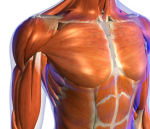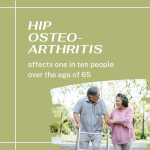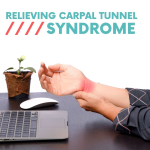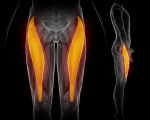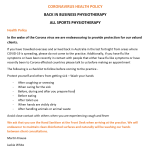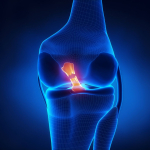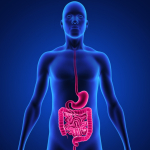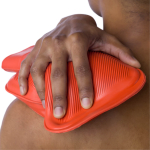“Manual therapy within an evidence based framework is under threat and struggling for relevance”
(Elvey & O’Sullivan 2005)
The reasons for this are twofold
– Manual therapy developed largely from a culture of treating signs & symptoms resulting in the inappropriate
application of intervention for many disorders
– There has traditionally been a lack of consideration given to diagnosis and in particular classification of
disorders both in clinical practice and evidence based research
– These have led to the lack of recognition that the complaint of pain is only one part of a disorder which is
complex and involves far more than the expressed complaint
Manual therapy has sufficient scope of practice to enable its ethical use in disorders where the
characteristics of the disorder may be a combination of organic and non-organic features
A classification system is essential in order to prescribe an intervention which addresses the
multidimensional nature of the disorders presenting for manual therapy
The only avenue to demonstrate manual therapy efficacy is in the promotion of a disorder
classification system which would allow manual therapy intervention to be tested for its effect on a
specific disorder
Diagnostics embraces
– a diagnosis
– a stage
– a classification
This allows the limitations of the intervention to be recognised before the research trial
commences
Classification diagnostics is of utmost importance in chronic disorders where there may be a
domination by non-organic morbidity such as psychosocial issues
Defining disorder
resulting from some type of presumed initial tissue pathology. These features of a disorder are
either ‘morbid’ or they are ‘effects’.” (Elvey & O’Sullivan 2005)
In some disorders the morbid features may dominate whilst in others the effects may dominate
Morbidity = pertains to unwholesomeness, unhealthy, disease or illness and may be physical or
psychological
Physical morbidity
– Physical state of tissue pathology
– Red flag issues may be incorporated here (eg cauda equina pathology {Waddell 1996})
Psychological morbidity
– Underlying emotional state which might be regarded as psychiatric in nature
– Yellow flags may be incorporated here (Linton 2000)
Effects = an outcome of the consequences of an underlying disturbance
Physical effects
– Physical outcome which is associated with an underlying physical state
– Impairments and organic effects
Psychological effects
– Refers to an experience of unpleasantness or unpleasantness associated with an underlying emotional state.
– Constitutes various forms of suffering.
– Fear avoidance, abnormal illness behaviour or psychosocial features will accompany an ankle sprain to
some extent and chronic low back pain to a larger extent.
– When non-organic effects dominate they are referred to as morbid in nature and the term ‘yellow flags’ applies.
Such application allows for reasoning as to whether manual therapy intervention is indicated or contraindicated
and what form of intervention is appropriate. Manual therapy is not indicated where the non-organic features are largely out of context with the organic features or where they have become morbid in nature (Elvey & O’Sullivan 2005)
Scope of manual therapy
Treatment is regarded as a specific intervention performed by the clinician
Management is either general or specific, and deals with strategies for the prevention of further tissue strain, damage or injury, the maintenance of restoration of general function and the prevention of the recurrence of the disorder. Management uses a cognitive behavioural approach which takes into account the impact of non-organic aspects of a disorder
This distinction increases the scope of manual therapy. For example, where non-organic effects dominate a disorder, management in this sense must be cognitive behavioural in nature which may incorporate a functional restoration program which would be an adjunct to a more central intervention based on dealing with the non-organic dominance of the disorder, thereby maintaining
the credibility of manual therapy.
Single treatment techniques used in isolation do not have the capacity to resolve a disorder, given
the fact that the nature of the disorder is multifactorial.
A range of interventions must be available incorporating treatment and management where
indicated. When incrementally incorporated it must have the capacity to reverse the pathology of a
disorder in part or in full, leading to partial or full recovery
The view is held that manual therapy intervention simply stimulates, activates or promotes innate
mechanisms leading to recovery
The premise for the benefits of manual therapy is that it replicates normal physical and
physiological function.
Stimulation of physiological and biological functions lead to normalization of homeostasis in the
region of pathology – therefore this occurs at a cellular level of functioning at the various stages of
recovery (repair, remodelling, recovery)
Management may be the prevention of excessive tissue strain due to aberrant movement, or the
for non-organic effects such as functional restoration or reduction of excessive muscle guarding
as a result of excessive fear
Indications
Is the nature of the patients complaint suitable for manual therapy?
In general, is the apparent nature of the disorder suitable for manual therapy?
Is the diagnosis suitable for manual therapy? Does it involve physical or organic pathology which might be
favourably influenced by manual therapy?
Is the disorder classification suitable for manual therapy? Does it involve the presence of organic features which
dominate over any non-organic features and which might be favourably influenced by manual therapy?
Is the disorder stage suitable for manual therapy?
Have all considerations been given and appropriate evaluations been carried out to ensure that the proposed
intervention does not have the potential to cause harm?
Is the patient compliant with the proposed intervention?
Does the proposed intervention satisfy the intent of the patient referral?
Has informed consent for manual therapy intervention been obtained?
Contraindications
Any other form of intervention is more appropriate
The nature of the patient is unsuited for manual therapy
The nature of the disorder in terms of the diagnosis, classification and stage is unsuited for manual therapy
There are any unrelated features to the disorder, or co-morbidity, which mean that manual therapy or certain
interventions are contraindicated
The intent of the patient referral is not satisfied by the proposed intervention.
The patient is likely to have any type of adverse reaction to manual therapy.
Any form or harm may result
Informed consent has not been obtained
The patient is affected by alcohol or illicit drugs
Evidence based practice
Significant debate regarding the efficacy of manual therapy treatment for acute low back pain
(Maher et al 1999), and little evidence for efficacy in the treatment of chronic low back pain (Koes
et al 1996)
Reasons for this are
– Groups of individuals with ‘non-specific …..pain’ are not homogeneous
– Lack of consideration that the complaint of back or neck pain is only one feature of the
disorder. In itself pain is not a disorder.
– General lack of appreciation that the reduction of pain does not necessarily result in
resolution of the disorder
– There appears to be a necessity to continually search for a physical ‘technique’ or ‘protocol’
which will favourably influence pain
– There appears to be continuous clamour for supremacy in the physical treatment of the spine
by different professional groups
– There is a lack of appreciation that manual therapy has a scope of practice which includes
many interventions and that these interventions must be used systematically and
incrementally towards the resolution of a disorder
– There appears to be a lack of appreciation that disorders are different even though there may
be a superficial pattern or sameness and complaint of pain. The vast majority of RCT use specific techniques in isolation in non-specific conditions ‘while there is evidence for the benefits of the McKenzie protocol for the treatment of low back pain there isn’t for manual therapy’ (McKenzie 2000) is a contradiction in terms as the McKenzie approach is in fact manual therapy
Movement based classification of pain disorders
Mobility of spinal segments in isolation is not predictive or diagnostic in classifying pain disorders
“It is the association between the mobility and control of the spinal segment, and its relationship to the pain disorder, which appears to be critical” (O’Sullivan 2005)
Peter O'Sullivan has put forward 3 sub-categories
"Pain disorders associated with movement impairments are associated with a loss of normal physiological movement of lumbo-pelvic mobility, and abnormally high levels of muscle guarding and co-contraction of lumbopelvic muscles with generation of intra-abdominal pressure....[resulting in].....excessive force closure"
"Pain disorders associated with control impairment are associated with no impairment to the mobility of the symptomatic spinal segment, but rather present with impairments or deficits in control of the symptomatic spinal segment pressure...[resulting in]....reduced force closure"
"......mal-adaptive movement and motor patterns result in chronic abnormal tissue loading and ongoing pain and distress......These disorders are also invariably associated with non-organic factors but these factors do not dominate the disorder, leaving them more amenable to physiotherapy intervention based on a cognitive behavioural motor learning model"
(5th Interdisciplinary World Congress on Low Back and Pelvic Pain, Melbourne, 2004, Australia p132)

















